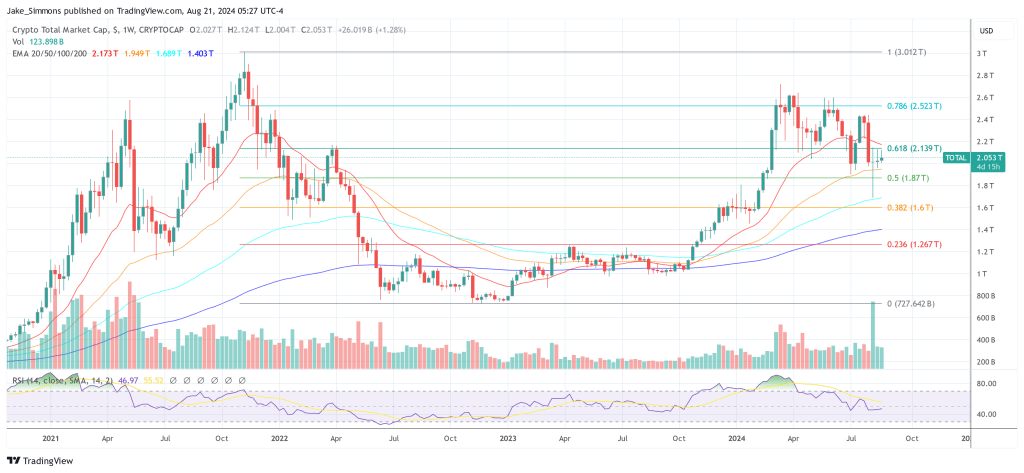Crypto Whale Loses $55 Million In Massive Hack: Details
In a massive security breach, a crypto whale has reportedly lost $55.47 million in DAI due to a sophisticated phishing attack. The incident, detailed by blockchain analytics firm Lookonchain and cyber security firm Certik, involves the unauthorized transfer of ownership of a Maker vault containing substantial DAI holdings to a malicious entity. Here’s How The […]

In a massive security breach, a crypto whale has reportedly lost $55.47 million in DAI due to a sophisticated phishing attack. The incident, detailed by blockchain analytics firm Lookonchain and cyber security firm Certik, involves the unauthorized transfer of ownership of a Maker vault containing substantial DAI holdings to a malicious entity.
Here’s How The Mega Crypto Hack Happened
The sequence of events began with an unsuspecting victim signing a transaction that seemingly appeared innocuous but was actually a setup leading to the compromise of their assets. The critical transaction, pinpointed at August 20, 2024, at 5:40:47 PM UTC, redirected the ownership of DSProxy #166,776 to a notorious phishing address “0x0000db5c8B030ae20308ac975898E09741e70000.”
Following the change in ownership, the attacker utilized another address, “0x5D4b2a02c59197eb2cae95a6df9fe27af60459d4,” to illicitly mint and withdraw 55,473,618 DAI tokens from the compromised vault. The blockchain records as per Etherscan reveal the attacker’s subsequent actions, where they converted approximately half of the stolen DAI into 10,625 Ethereum (ETH).
CertiK, a leading security-focused ranking platform to analyze and monitor blockchain protocols and DeFi projects, identified the phishing technique used as part of a broader category known as Inferno Drainer. Inferno Drainer is a particularly virulent type of smart contract exploit that manipulates transaction permissions to redirect assets to addresses controlled by the attacker.
The exploit is often embedded within malicious smart contracts that appear benign or mimic legitimate contract interactions, thus deceiving the user into executing transactions that grant attackers access or control over their digital assets.
Certik stressed the critical nature of this exploit, indicating that the theft was facilitated by the attacker gaining control over the victim’s externally owned account (EOA) through deceptive means, including but not limited to, disguised malicious links or compromised interfaces.
Following the incident, Lookonchain has been vocal about how to safeguard crypto assets. Via X, they warned: “When you sign a transaction, always double-check before clicking ‘confirm’ and do not sign unknown transactions!”
This recent incident adds to an already tumultuous year in crypto security. According to CertiK, the total losses in July alone amounted to approximately $270.9 million due to various exploits, hacks, and scams, despite about $7.8 million being returned to victims. This figure represents the second highest monthly loss for the year 2024.
Breaking down the losses, CertiK reported that exit scams accounted for approximately $3 million of the total. Flash loans, which are often used in sophisticated arbitrage strategies but can also be exploited to manipulate market prices temporarily, represented a staggering $265.8 million. Other exploits contributed approximately $9.8 million to the total.
At press time, the total crypto market cap stood at $2.053 trillion.

What's Your Reaction?




















